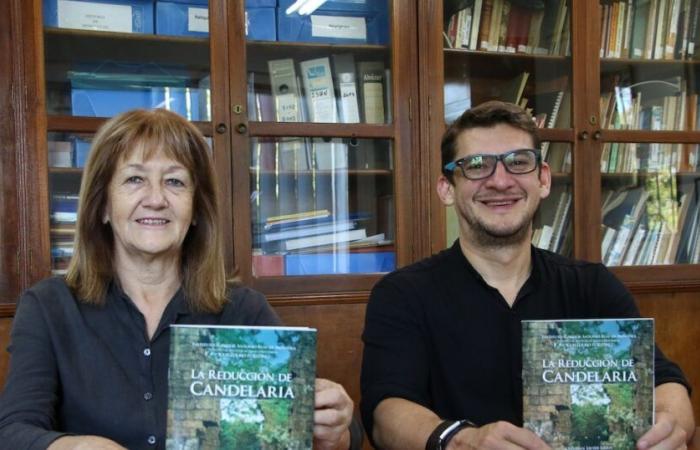An investigation that explores the cultural and social legacy of the Jesuit missions will be presented at the International Book Fairhighlighting the importance of regional history in the national and international context.
The book Candelaria reductionwhich is part of a series of publications and that includes the results of an investigation by missionary teachers in the region of the Jesuit missions, will be presented tomorrow, Friday, May 9, at 4:00 p.m., in the White Hall of the Rural, during the Buenos Aires Book Fair.
This book, the ninth of a projected collection of eleven volumes, was developed by the Historical Research Center “Guillermo Furlong”belonging to Higher Institute Antonio Ruiz de Montoyalocated in the city of Posadas.
Those responsible for this research, history teachers Cristian Neris y Liliana RojasThey expressed their enthusiasm for the opportunity to present their work in an international event. As detailed, the institute they represent celebrates its 65th anniversary this year, adding a special meaning to the publication.
“Perhaps the history is written from the centers of power and local or regional issues are in the background. Then, regional history has the mission of enriching and adding to national history. That is why it is important that this work reaches a fair of the international book, so that also from other parts of the country they can understand and be interested in a stage that was really vanguard in terms of cultural, technical and social development,” Neris and Red said.
The publication not only focuses on the Candelaria reductionbut also addresses the cultural, technical and social contributions of culture Guaraní-Jesuittics In the region. As Rojas explained, the Jesuit reductions represented a model of civilizational development that can be compared to the Spanish cities of the time. These communities, which initially exceeded 50 but were reduced to 30 due to the attacks of the bandeirantesthey stood out for their organization and advances in various aspects. “This experience is an example worldwide,” he said.
In the specific case of Candelariathe researchers highlighted their role as a nerve center in the region. As they explained, this reduction was not only the headquarters of the ecclesiastical government, but also a key point for trade and product distribution.
-“Candelaria is port. Here raw materials and products arrived, and from here they were distributed to other ports,” they detailed. This strategic importance is reflected in the architecture of the place, being the only reduction that had a two -storey building, designed to fulfill the administrative and logistics functions required by its central position.
The book also emphasizes that one of the vestiges of this era, the aforementioned two -storey building, is still preserved in the town of Candelaria, which this year celebrates the 400 years of its foundation as a Jesuit reduction. This anniversary adds a significant historical context to the publication, which seeks not only to document, but also preserve the memory of this cultural legacy.
For the elaboration of the work, the researchers resorted to primary and secondary sources, including historical documents and publications of Jesuits and travelers. In addition, they had the collaboration of the architect and doctor in History Carlos Pagewho contributed to the documentation and final correction of the text. Page, resident in Córdoba, is recognized by his experience in the study of Jesuit reductions and their impact on the region.
Neris and Rojas’ work is not limited to this publication. Both have an outstanding trajectory in the academic and cultural field. Neris, who currently coordinates the Department of Research, Promotion and Evaluation of the Montoya Institute, also leads the Historical Research Center “Guillermo Furlong”.
For its part, Rojas has been the director of this center and has worked in various institutions, such as the Regional Museum “Aníbal Cambas”in addition to performing as a teacher in secondary education teachers in the history of the Montoya Institute.
The series of publications to which it belongs “Candelaria reduction” It still has two pending deliveries, which will be dedicated to the reductions of Martyrs y San Javier. According to the researchers, these works will be the closure of a project that seeks to share with the public the results of years of work and study on a historical stage that deeply marked the region of missions and its cultural legacy.
* Tomorrow, Friday, May 9, at 4 pm, “Candelaria reduction” is presented in the White Hall of the Book Fair of Buenos Aires.






